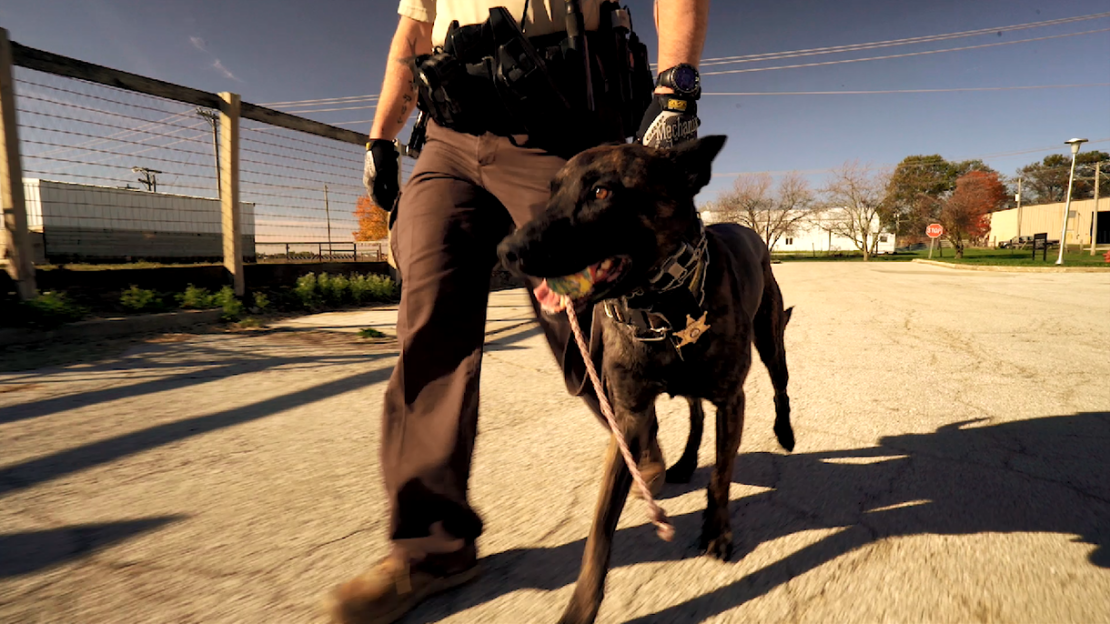John Tolley, March 3, 2018
A police officer is injured in the line of duty. A call goes out over the radio. No ambulance is to arrive, though. Instead, her partner loads her into their vehicle, and, lights flashing, siren blaring, nervously speeds her to the hospital.
But it isn?t the area emergency room to which they are headed. Rather, they rush to a veterinary clinic for this canine deputy.
It?s a sad fact that for all that working dogs do for us, from sniffing out explosives to assisting in search and rescue operations, there are scant few resources available to them when they are injured in the line of duty and need immediate medical care.
The University of Illinois at Urbana-Champaign is working to change that, though. In partnership with the Carle Hospital?s Arrow Ambulance Service, Illinois? College of Veterinary Medicine is creating treat and transport protocols for EMTs and other first responders so that they can safely and effectively provide the care these dogs need.
?Working dogs in the line of duty are exposed to hazards just as any police officer, firefighter or EMT would be,? says Ashley Mitek, DVM, a teaching assistant professor at Illinois. ?They can get attacked or stabbed or shot, they can get heat exhaustion, they can accidentally inhale narcotics causing them to overdose. So, it?s very important that we have training available to their handlers and other first responders.?
Effective January 1st, 2018, Illinois became one of the first states where ambulances are legally allowed to provide urgent care and transportation to working dogs. And, while they share many physiological similarities with human, dogs structural and behavioral differences pose a unique challenge to paramedics and EMTs.
As Mitek explains, a typical training session covers how to adapt methods used on human patients to dogs. The first responders in the course learn how to check for a pulse, listen to the heartbeat and lungs, how to take blood pressure and measure oxygen saturation and how to take an EKG on an animal that is covered in fur. To help visualize the training, the veterinarians use life-like canine mannequins from the university?s Clinical Skills Learning Center to demonstrate techniques.
?We have a CPR station, a vital sign monitoring station, an intubation, or breathing, station,? Mitek explains. ?The first responders rotate through the stations, each of which is staffed by a veterinary specialist. So, they?ll be able to learn from the experts, hands-on, how to apply the skills to working dogs.?
One of the difficulties in treating working dogs is that, unlike their human partners, they are infrequently afforded insurance coverage. That means that when a dog suffers an injury, it falls upon their often cash-strapped department to shoulder the costly burden of care. Illinois is working to address this problem as well.
?We?re creating a fund for the dogs so that we can provide medical care to any dog that?s injured,? says Mitek. ?That would also go for retired dogs because when they retire, they are usually adopted by their handler and then all of the medical expenses fall to them.?
While Mitek and the University of Illinois Veterinary Medicine team are adept at treating animals of all sizes, from 2,000 pound-plus heifers to miniscule hamsters, she is quick to note that caring for these canines has been particularly rewarding.
?In all my experience as a veterinarian, I?ve never been more inspired than when I work with working dogs because they devote their entire life to keeping us safe and keeping our kids safe and keeping our communities safe. Being able to help these dogs, even if it?s just one whose life we save, is something that I am so proud of.?







